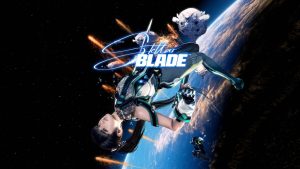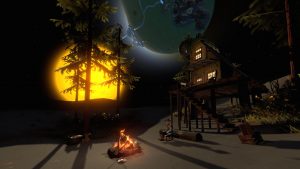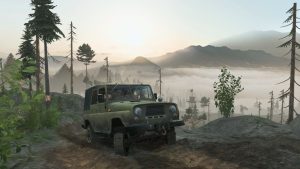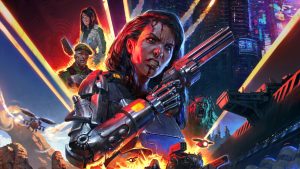
The Order: 1886 is by far the best looking game on the PS4 and it’s a shame that Sony and Ready At Dawn studios have been hesitant to show more of the game. We are not sure about the reason behind The Order: 1886’s lacklustre marketing but there surely has to be a reason behind the same. The gameplay shown so far seems to be a poor imitation of Gears of War’s duck and shoot style and the quick time events are hardly inspiring. With only a month to go, we are highly sceptical about the critical reception that The Order: 1886 might receive. But we will reserve our final judgment when the game launches. You may never know, Sony might have something up their sleeves and the final game may very well shock and surprise us.
Gameplay issues aside, there is one department that the game truly shines in. The game is without a doubt a looker and Ready At Dawn’s choice of opting for cinematic black bars adds a new dimension to the the visual presentation. The Order: 1886 was showcased at last month’s PlayStation Experience and this gave us the opportunity to further analyze some of the hidden graphical details found in the 15 minute demonstration.
Observe the dynamic foot print indentation on the cloth of the airship.
The demonstration opens up with Galahad and company descending down a airship. Dynamic foot print indentation can be clearly seen on the cloth of the airship which is directly proportional to the amount of pressure that Galahad is applying to his legs and and eventually to the airship’s cloth. Ready At Dawn’s cloth simulation technology is clearly at work here allowing different materials to have their own individual properties.
Cloth physics and 4xMSAA really lift up lifts up this scene to all new heights.
Further instances of cloth physics are seen when Galahad makes his way across the narrow pathway to make his way inside the airship. Galahad’s coat sways away dynamically according to the blowing wind. These are intricate details but go a long way in adding more to the experience.
During the same shot we can see the positive effects of 4xMSAA which results into sharper image quality and the complete absence of jaggies on the ropes holding the airship. Props to Ready At Dawn for using 4xMSAA over FXAA and MLAA, and although they could have saved more frame time by using standard AA techniques they opted for a resource intensive solution enabling the game’s engine to have CG level image rendering and detailed sub-pixel information.
Skin shader and cloth material rendering in action.
Once the group gets in, we get a clear view of the character models and cloth material rendering. It seems that Ready At Dawn are using a resource expensive skin shader which is using multiple specular lobes. This helps in calculating several skin properties such as pores, marks or scars accurately depending on the amount and angle of the light sources.
Global Illumination in full force.
Global Illumination is used in plenty in The Order: 1886. The scenes above are good examples of GI, which helps in adding realistic lighting sources to the scene. As the enemy enters the room, take a look at the light sources and how it reflects the light on the nearby objects resulting into bounce light effects. When Galahad takes him down, the light source still casts dynamic shadow before it comes to a stand still. Obviously this is a very resources intensive technique and we are glad to see its adoption being increased in several AAA games.
A closer look at the material compositing.
In the scene above we get a close look at the different material textures in action here. Ready At Dawn have added blend for compositing cloth with different kind of materials [such as leather, metal and wood in this scene] giving it a great look with several variable parameters that the developers can adjust.
Light reflecting depends on the object material, its transparency, opaqueness and reflective properties.
In the scene above we clearly see how light is being handled by different kinds of materials such as the glass on the door in the first video. In the second video, the carpet is not reflecting the light back but with the same light source the glossy floor is able to do that. Even the broken glasses are able to reflect back the specular light back. This is precisely what Ready at Dawn were talking about in their presentation at last year’s GDC and it seems that they have nailed it. One little detail is that the amount of light reflection varies in the proportion to the angle at which Galahad is positioned. Absolutely phenomenal.
Physical based rendering is the way to go.
It’s fascinating to see Ready At Dawn use Physical Based Rendering for the Order 1886. This way they are able to make almost everything look photo-realistic by playing with the amount of light bouncing off the surfaces, in this case the character’s faces. The game clearly uses refractive index properties to define how much lighting and shadow effects will vary on a particular object, taking into account the object’s absorption and diffusion parameters. It is difficult to gauge whether Ready at Dawn studios have developed each and every object’s texture individually and whether they all have variable refractive index properties, but at least all the objects that comes to immediate attention on the screen do have individual properties.
Additionally the game uses lens effect, depth of field, rag doll physics for objects, variable gun physics, motion blur during several instances such as fights.
To end this article, it’s literally amazing and to an extent jaw dropping the amount of work that Ready At Dawn have poured into The Order: 1886. This is easily one of the titles that looks next-gen. However we are not sure whether this translates into gameplay. It’s sure to be a looker when it releases next month but whether it will bring in revolutionary gameplay is something that remains to be seen.
















Share Your Thoughts Below (Always follow our comments policy!)